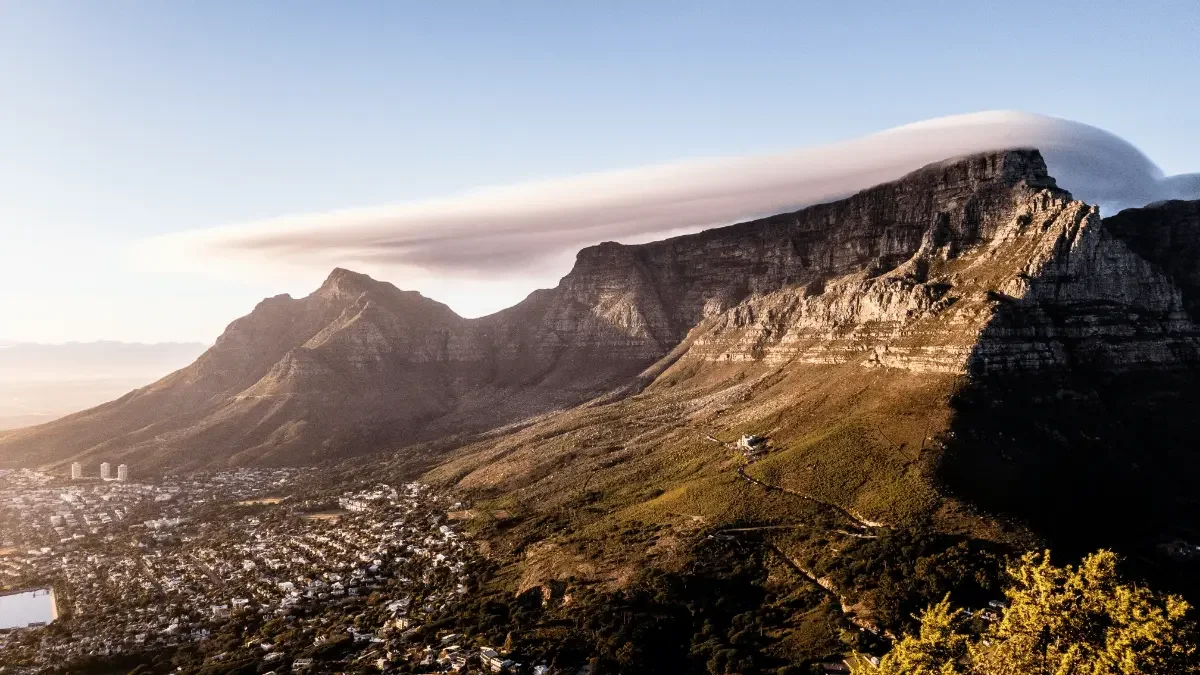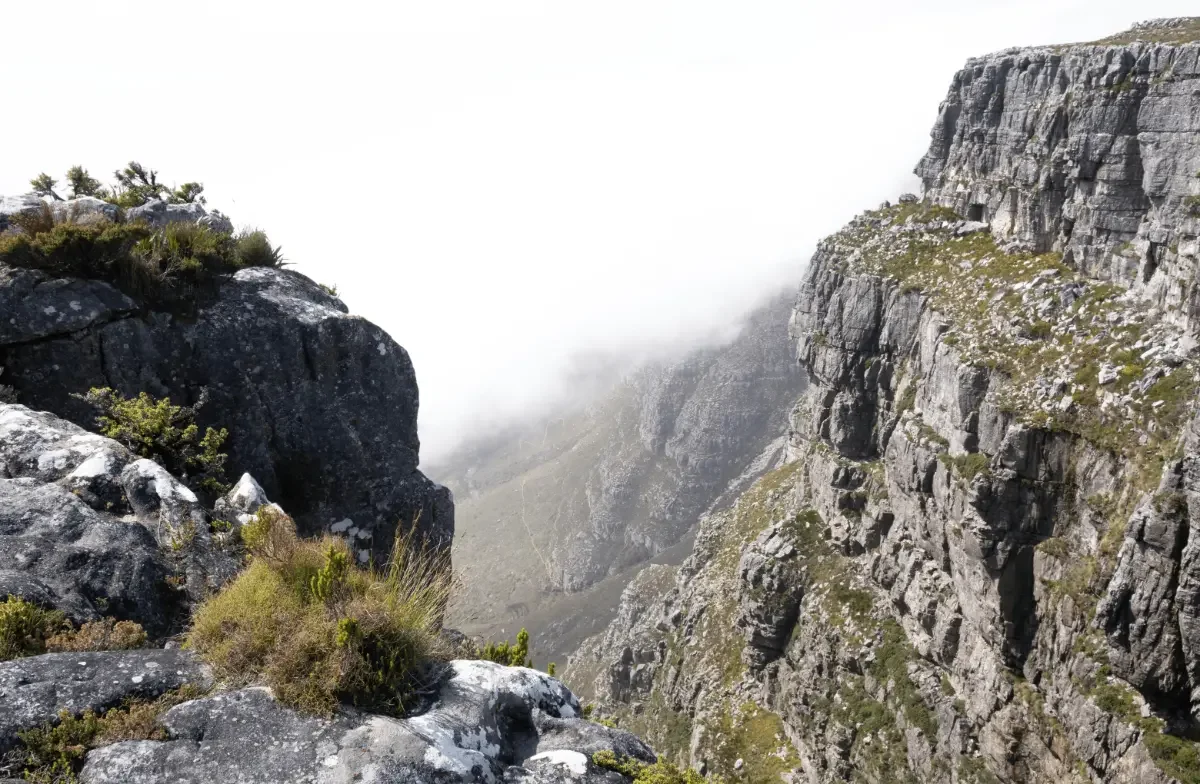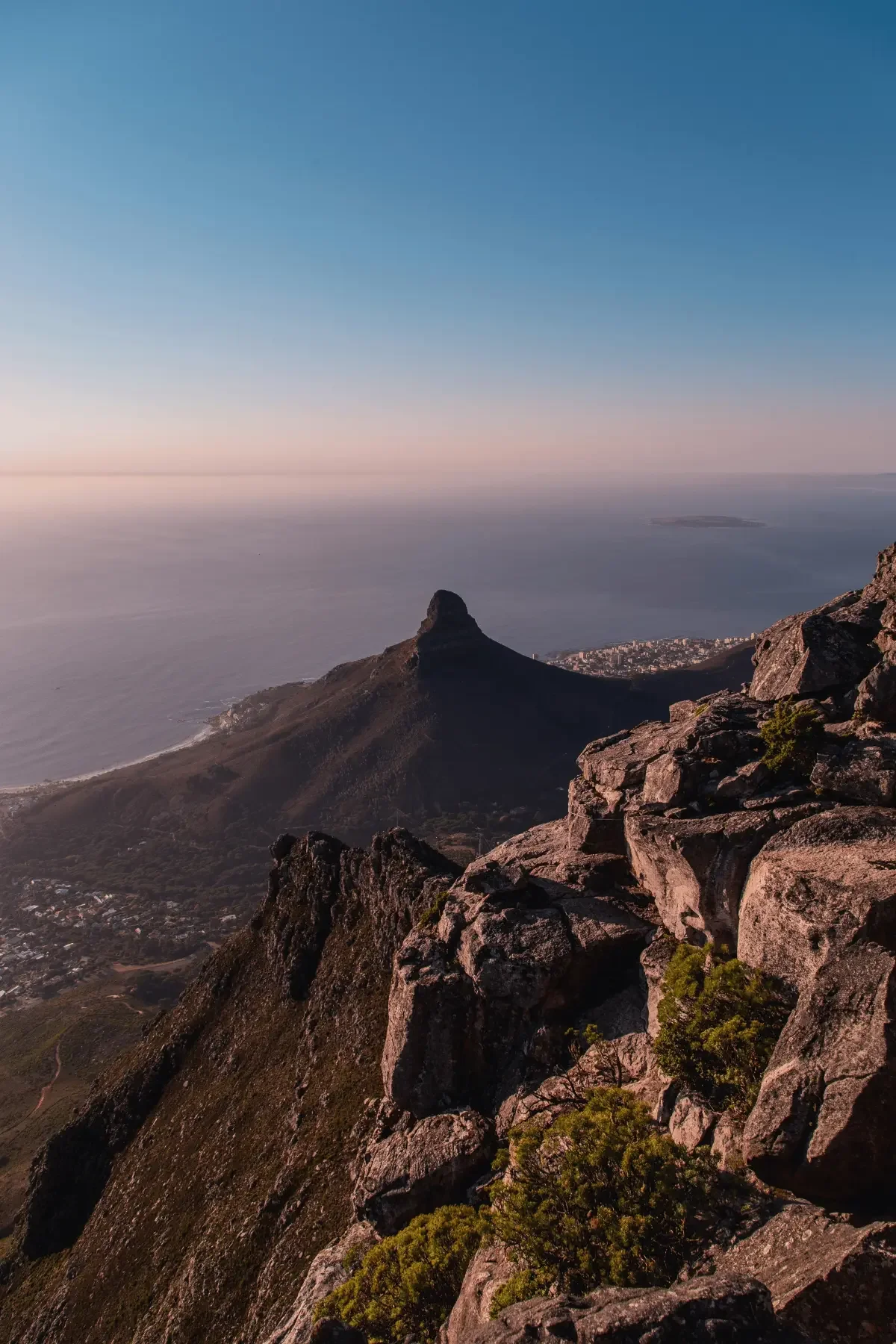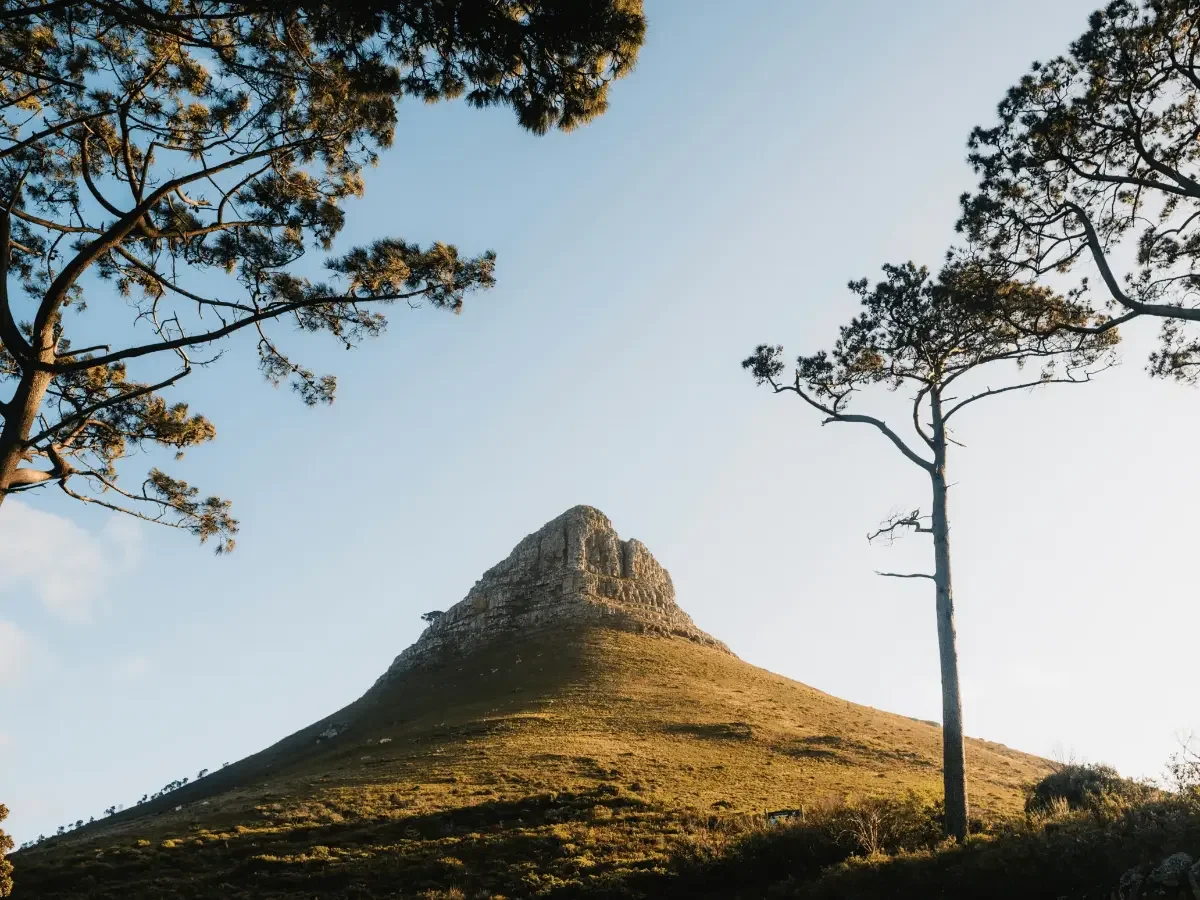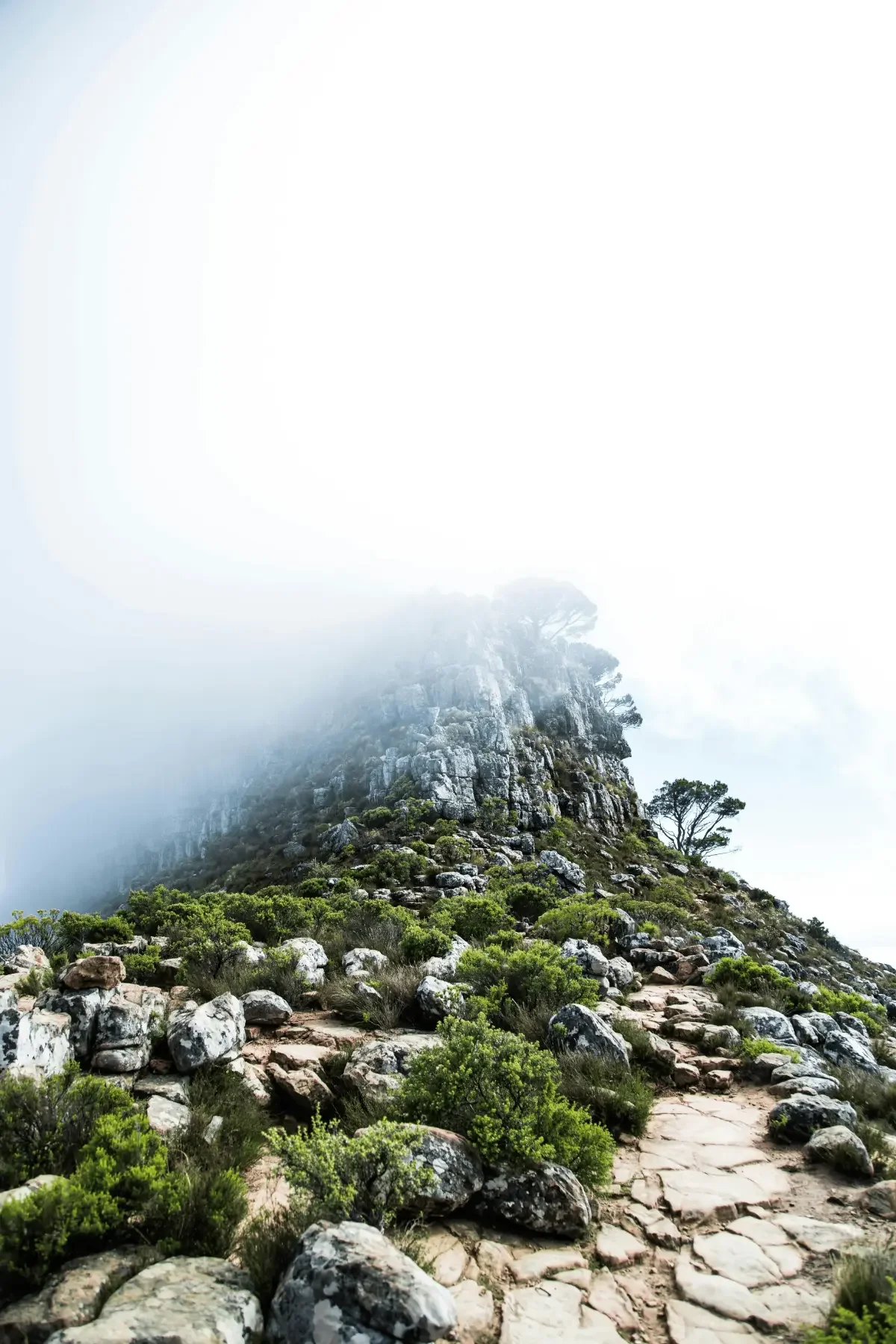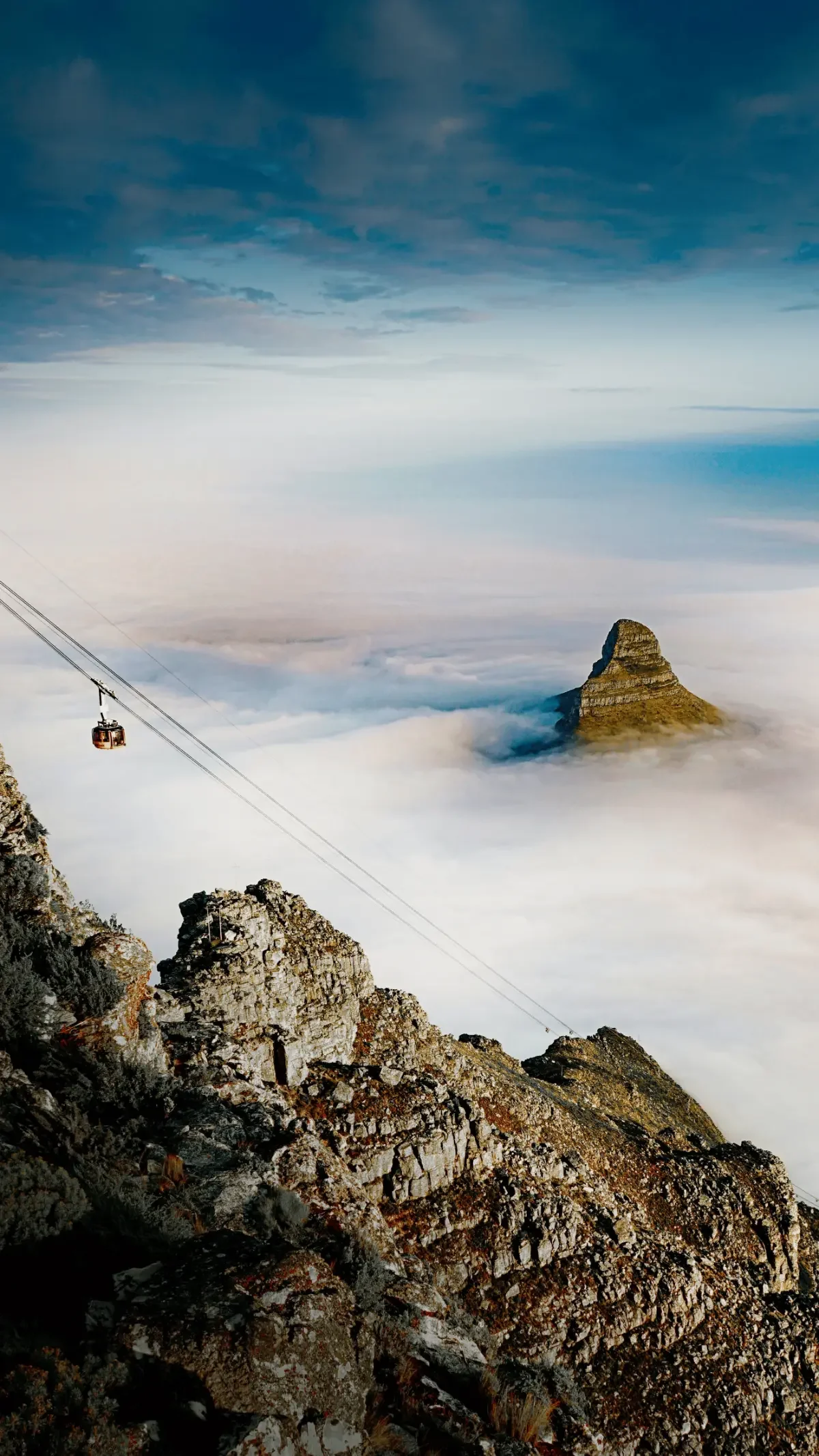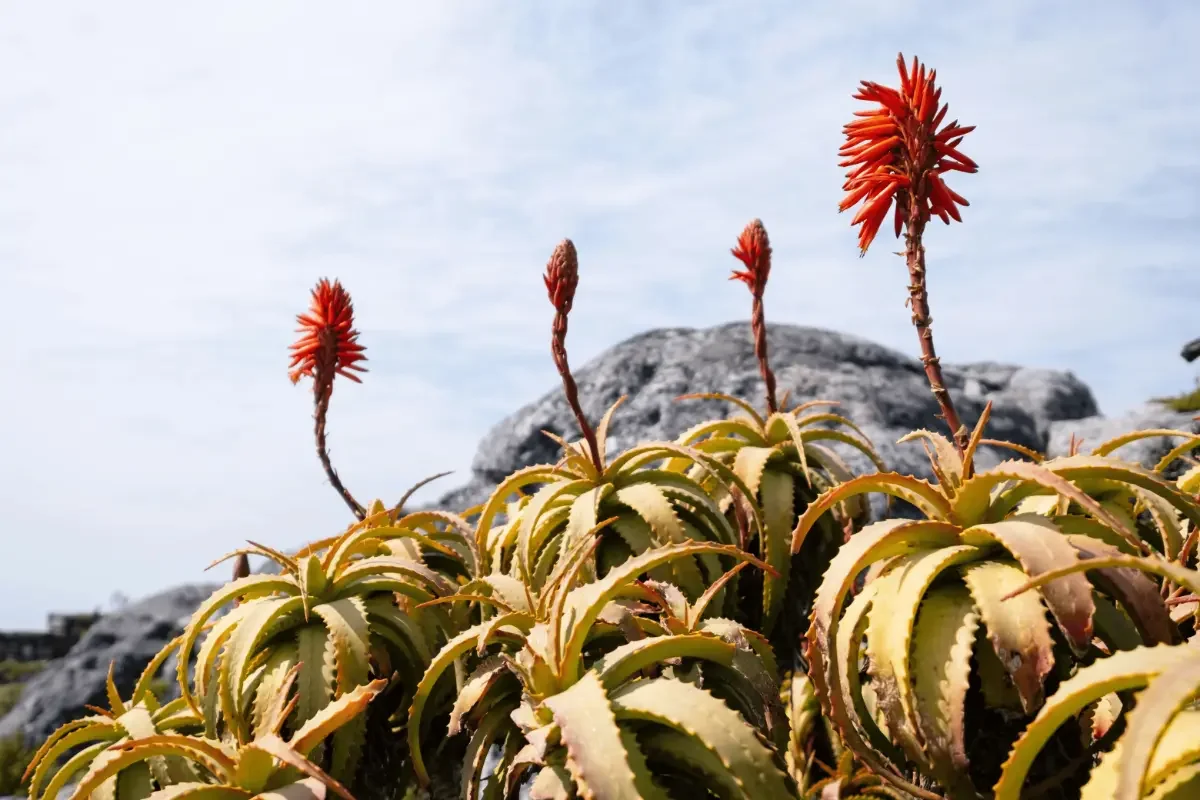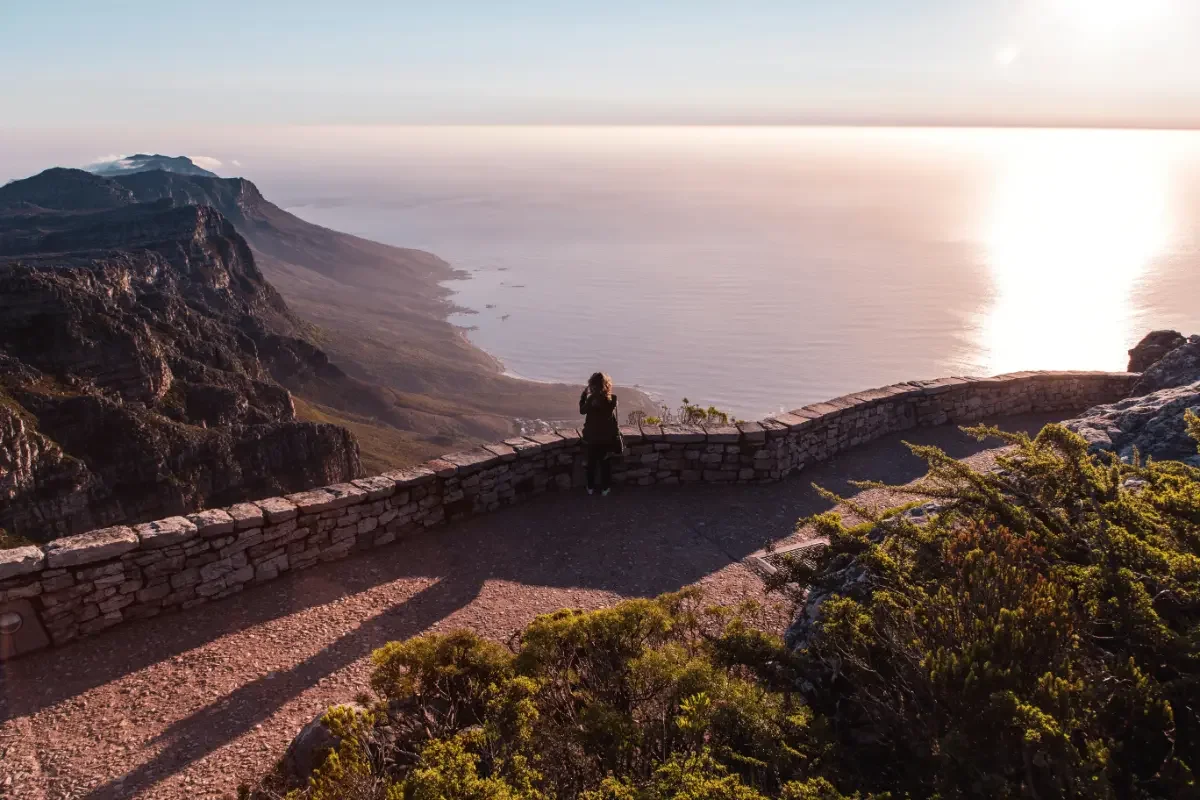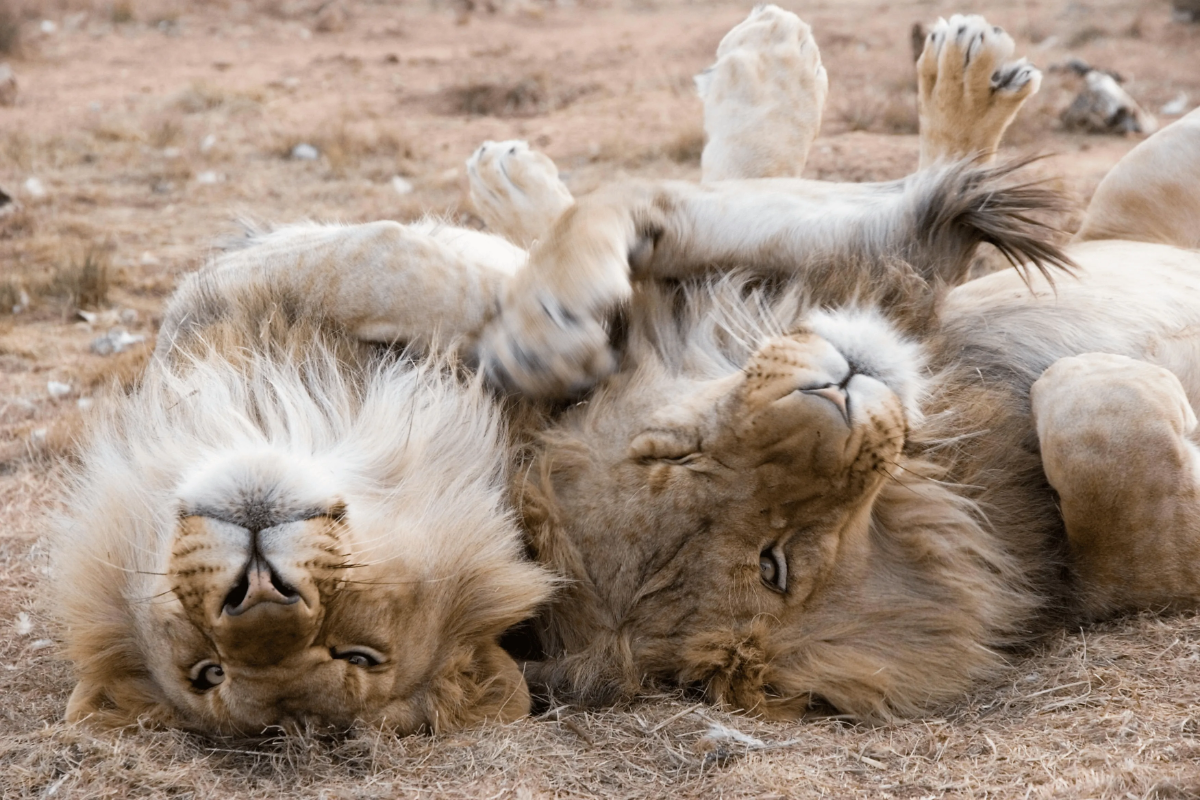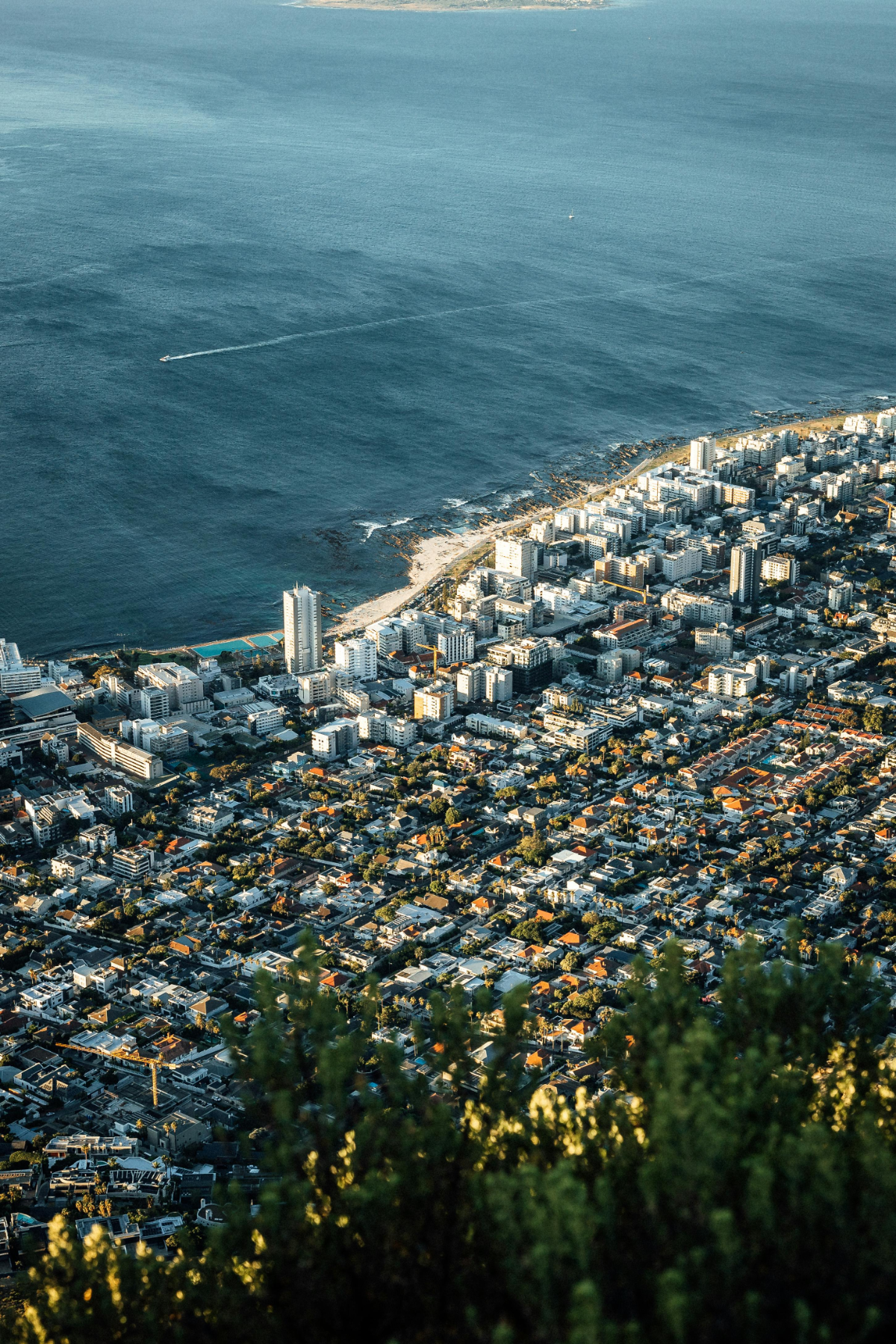Table Mountain Hike, South Africa: Compare 7 Routes
Last Update October 27, 2025
Explore hiking Table Mountain’s top routes, from Platteklip’s steep stairs to Skeleton Gorge’s forest ladders, with fynbos scents, sandstone cliffs, and tips for every fitness level.
Table Mountain in Cape Town, South Africa, rewards even first time hikers with the heady scent of fynbos, towering sandstone cliffs, and a cloud-swept summit accessible by routes suitable for every skill level. From the V&A Waterfront, the mountain’s truncated dome appears benign, but swing around to its gullies and you discover a labyrinth of hidden gems - waterfalls, ledges, and razor‑sharp arêtes. Each path is a conversation between muscle and geology: the burn of quads on knee‑high stone stairs, the damp hush of indigenous forest in Skeleton Gorge, the adrenaline rush of India Venster’s airy traverse. Rather than ranking trails by vague “easy–moderate–difficult” labels, this guide matches on‑the‑ground route science with local rescue data so you can pick a line that fits your fitness, weather window, and appetite for scrambling. Knowledge is more than power here, it is the thin margin between exhilaration and a rescue helicopter buzzing overhead. If you’re planning a wider exploration of the Mother City beyond its peaks, this Cape Town guide offers a thoughtful look at where to stay, eat, and wander.
Table of Contents
Affiliate Disclosure
Some links in this post are affiliate links. That means we may earn a small commission, at no additional cost to you, if you choose to make a purchase. These are always brands, stays, or experiences we would recommend to a dear friend. Thank you for supporting the quiet sustainability of Terra Selene.
Why Hike Table Mountain?
Hiking Table Mountain is essentially free; there is no entrance fee to Table Mountain National Park, and every route culminates in panoramas that evolve with altitude and aspect. At 3,563 ft (1,086 m), Maclear’s Beacon crowns the summit plateau, offering a 360‑degree sweep from the Cape Flats to Robben Island. Yet the real magnetism is subtler: the smell of crushed buchu after overnight drizzle, Cape sugarbirds riding thermals, and the moment the city bowl falls silent beneath the famous south‑easterly “tablecloth” cloud. Combine those sensory dividends with convenient urban trailheads, Kloof Nek, Tafelberg Road, and Kirstenbosch Gardens, and you have a world‑class Cape Town hike that starts as casually as a stroll to your local café.
Table Mountain National Park at a Glance
The park guards 25,000 hectares of UNESCO-listed fynbos and Afro-montane forest, stitched together by more than 100 recognized trails. The mountain rises abruptly from sea level, so even so‑called “short” walks rack up serious elevation: the direct Platteklip line gains 2,300 ft in just 1.5 mi. The weather is maritime Mediterranean, with dry summers, wet winters, with wild swings in wind speed at any time of year. Average summit temperatures hover 6 °C below the city, and south‑easterly gales can reach 100 kph, halting the cable car with ten minutes ' notice. Carry layers, a printed map, and 2–3 L of water even on cloudless mornings.
Choosing Your Table Mountain Hiking Route
What follows is a route‑by‑route hiking trail outline pairing real statistics with felt experience so you can match ambition to ability. The times provided assume a reasonably fit hiker in dry conditions.
Platteklip Gorge
key stats
Distance: 1.5 mi / 2.4 km one-way
Elevation gain: ≈ 2,300 ft / 700 m – a constant steep ascent on rocky stairs
Time: 2–3 hours up; return in 5 minutes via the upper cable car station if the wind allows
Difficulty: Moderate to hard; Platteklip Gorge's difficulty is aerobic, not technical
Trailhead & parking: Rocky Stairs parking on Tafelberg Road, 0.8 mi past Kloof Nek parking turn-off
Navigation clue: Cut stone path; consult the Table Mountain hiking map grid C3
Best window: Early morning to dodge Cape Town’s midday heat and cable-car queues
The Platteklip Gorge hiking trail is the quintessential “direct route” for hikers ticking Table Mountain off their Cape Town bucket list. Expect an unrelenting staircase carved into rust-red sandstone that sets your calves ablaze yet rewards you with panoramic views of the city bowl at every turn. Because the trail pops out just metres from the upper cable station, many walkers save their knees and purchase a one-way cable car ticket for the descent to the lower cable car station, slashing total elevation loss. Carry at least 2 L of water; summer temperatures often top 30 °C in the gorge.
India Venster
KEY STATS
Distance: 1.8 mi / 2.9 km
Elevation gain: ≈ 2,400 ft / 730 m
Time: 2.5–3 hours up
Difficulty: Challenging; exposed ledges, rock scrambling, occasional chains, for experienced hikers
Trailhead & parking: Boulders parking beside the lower cable car station on Tafelberg Road
Navigation clue: Follow the painted yellow footprints and white dots on the rocks
Map reference: Grid C2 on the official Table Mountain hiking map
India Venster is the show-stopper among Table Mountain hiking trails, weaving up amphitheatres that stare directly into downtown Cape Town and the Atlantic beyond. Three short chain-assisted moves guard exposed, airy corners; confident hikers relish the sense of vertical theatre, while rescue teams caution that gorge difficulty spikes when walkers freeze on ledges. Start by hugging the contour path before turning steeply skyward beneath the rotating cable cars. The spectacular views make every heart rate spike worthwhile, and you can still hop on the upper cable for a painless ride down.
Skeleton Gorge to Maclear’s Beacon
key stats
Distance: 3.0 mi / 4.8 km to beacon
Elevation gain: ≈ 2,360 ft / 720 m
Time: 3–3.5 hours ascent; 1 hour extra if you circle back to the cable car
Difficulty: Moderate; shaded but slippery ladders beside the waterfalls
Trailhead & parking: Kirstenbosch Gardens entrance (paid lot)
Map reference: Grid E4 → D3; look for Hely Hutchinson Reservoir difficulty warnings
Beginning in lush afro-montane forest, the Skeleton Gorge trail up Table Mountain climbs wooden ladders beside a tinkling waterfall before emerging on heath-covered slopes that feel a world away from bustling Cape Town. After topping out, a boardwalk skirts the emerald waters of Hely Hutchinson Reservoir and its neighbor, “Hutchinson Reservoir difficulty” signs warn swimmers off, before a gentle rise to Maclear’s Beacon, the mountain’s highest point at 3,563 ft. Many hikers then traverse the tabletop to the upper cable car station, turning a humid forest hike into a summit-to-sea panorama.
Kasteelspoort and the Twelve Apostles Ridge
key stats
Distance: 3.6 mi / 5.8 km one-way
Elevation gain: ≈ 2,450 ft / 750 m
Time: 3.5–4 hours up
Difficulty: Moderate; long but rarely technical; short scramble onto the Diving Board is optional
Trailhead & parking: End of Pipe Track at Camps Bay (parking near Theresa Avenue)
Navigation clue: Well-trodden switchbacks; join popular routes along the Twelve Apostles crest
Map reference: Grid A4 on the Table Mountain hiking map
Often hailed as the “great hike for sunrise photo-hunters,” Kasteelspoort threads through protea stands and boulder fields until it reaches the celebrated Diving Board viewpoint. The diving board difficulty is far more psychological than technical; step onto the slab only if you’re comfortable with sheer drops. From here, a broad path traverses the summit plateau to the upper cable station, gifting stunning views over Atlantic rollers and back toward Lion’s Head. If you’re still feeling energetic, descend via Platteklip Gorge to create a classic Table Mountain loop hike, linking the Twelve Apostles ascent with the mountain’s iconic east-face staircase.
Pipe Track
Key stats
Distance: 4.1 mi / 6.6 km out-and-back
Elevation gain: ≈ 650 ft / 200 m – gentle undulations only
Time: 2–2.5 hours leisurely walk
Difficulty: Easy
Trailhead & parking: Kloof Nek parking or Camps Bay end of Tafelberg Road
Navigation clue: Follow the historic pipeline above the road; multiple turn-off points to steeper hiking routes
The Pipe Track offers the finest ratio of effort to reward among all Table Mountain hiking options. Skirting the western cliffs beneath the Twelve Apostles, it dishes out spectacular views of Camps Bay beaches and the Atlantic while avoiding serious climbing. Shade pockets make it a viable midday amble, and its level grade suits visitors easing into South African adventures. Keen to taste steeper terrain? Branch up Kasteelspoort or Slangolie Ravine for a bigger challenge, then return the same way for minimal total elevation loss.
Lion’s Head
key stats
Distance (Lion’s Head summit loop): 3.1 mi / 5 km
Elevation gain: ≈ 1,400 ft / 430 m
Time: 1.5–2 hours round trip
Difficulty: Easy to moderate; spiral track with occasional chains and rungs near the top
Trailhead & parking: Nek parking on the Lion’s Head side of Tafelberg Road
Contour Path distance: Variable 6–8 mi circuiting Table Mountain at ≈ 1,800 ft contour
While not a true Table-top ascent, Lion’s Head is stitched into the broader network of Table Mountain hiking trails and offers 360-degree breathtaking views over Cape Town and the Atlantic surf. A well-graded spiral leads walkers to chain-protected rock steps near the highest point; less confident hikers can take an easier ladder bypass. Just below, the contour path circumnavigates the mountain, connecting boulders parking, Pipe Track, Skeleton Gorge, and Platteklip Gorge trailheads, perfect for those who want an easy walk with constant great views without committing to a full summit ascent.
Nursery Ravine
KEY STATS
Distance: 0.9 mi / 1.4 km from Kirstenbosch to Skeleton-Nursery junction; 2.7 mi / 4.4 km total if you summit
Elevation gain: ≈ 2,050 ft / 625 m
Time: 2–2.5 hours to reach the tabletop; add 45 minutes to the upper cable car station
Difficulty: Moderate; steep stone staircases through a shaded ravine
Trailhead & parking: Same as Skeleton Gorge at Kirstenbosch Gardens
Navigation clue: Well-built steps merge with the Skeleton Gorge trail above fern forests
Less crowded than its neighbour, Nursery Ravine hikinh trail offers a lung-busting stair master beneath a canopy of tree ferns and yellowwoods before bursting onto open heath. At the summit, Nursery Ravine merges with the Skeleton Gorge trail (this junction marks the official Skeleton Gorge distance), giving hikers two choices: continue east to Maclear’s Beacon, the mountain’s highest point, or head west across the tabletop to the upper cable car station for an effortless ride down to the lower cable car station. The ravine is prized for spring orchids, cool shade, and a tranquillity seldom found on more popular routes.
Planning Your Ascent
Weather, Early Starts & Safety
Cape Town’s early morning lull is your friend: winds are lightest, temperatures mild, and trail parking plentiful. By noon or when the southeaster hits, the famous cloud “tablecloth” forms, erasing visibility in minutes. The South African Weather Service advises postponing if summit winds exceed 40 kph or if there are thunderstorms approaching from the NW. Log your route with a friend, store the Mountain Rescue number (+27 21 937 0300), and aim to be ascending, not descending, during the heat of the day.
Elevation Gain, Steep Ascents & Fitness
Do not underestimate the mountain’s relief: even easy lines involve thousands of stone steps. Build leg endurance with staircase intervals or weighted hill repeats two weeks prior. Uphill pacing of 1,000 ft per hour is sustainable for most recreational hikers; any faster, and breaks lengthen exponentially. Descents punish quads; use the cable car or shorten your stride to reduce joint impact.
Using the Cable Car
The rotating Table Mountain Aerial Cableway compresses a three‑hour descent into a five‑minute panorama. One‑way tickets (≈R240 per adult) are sold online; closure triggers include winds >100 kph, lightning, or power outages. A siren and loudspeaker give a 30-minute warning, heed it. If stranded, the quickest foot descent from the top station is Platteklip Gorge. For more ideas on how to weave your Table Mountain adventure into a full Cape Town itinerary, from Winelands to ocean walks, explore our curated city guide.
Navigation: Reading the Map
Mobile reception fades in the ravines, so download offline layers or carry a paper Slingsby Table Mountain map. Yellow footprints mark the India Venster hiking trail ; red epoxy dots indicate emergency escape ravines such as Porcupine. The summit plateau is deceptively flat: mist can obscure cairns, and multiple paths converge around cairn clusters; follow bearing, not intuition. If unsure, backtrack to the last confirmed marker rather than pressing on.
Flora, Fauna, and Conservation Ethics
Table Mountain’s fynbos is older than the Himalayas and richer in plant species per square kilometre than the Amazon. Iconic king proteas regenerate after fire, while reseeders such as silver tree (Leucadendron argenteum) rely on periodic burning cycles; trampling seeds or shortcutting trails disrupts this delicate rhythm. Porcupines, caracals, and endemic girdled lizards share habitat with visitors; feeding or chasing them is illegal. Stick to marked paths, carry out waste, and photograph flowers rather than picking them; one snapped bloom can end a genetic lineage in this nutrient‑poor soil.
Final Thoughts: Awaken Your Spirit on Table Mountain
Choosing a route up Table Mountain is less about conquering a summit and more about curating your own performance of elemental theatre: light versus rock, lungs versus gradient, caution versus curiosity. Respect the mountain’s mercurial weather, start earlier than your alarm suggests, and pack humility alongside snacks. Do so, and Table Mountain will reveal tranquil forests, exhilarating sky‑box ledges, and vistas that outlast the shutter click of any camera, memories you will revisit long after the fynbos perfume has faded from your pack.

